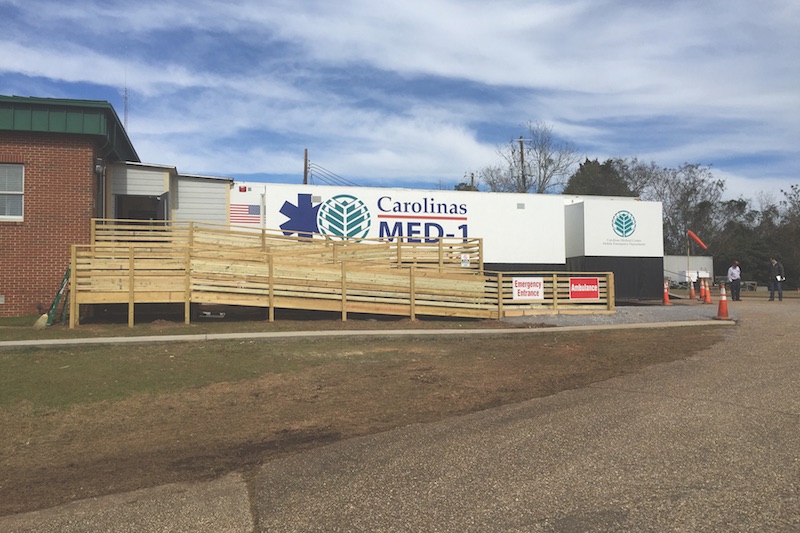Grove Hill (Ala.) Memorial Hospital is adding a new $3.75 million, 4,500-sf emergency department that will house nine exam and treatment rooms, a two-bay trauma room, expanded waiting area, and direct access to operating rooms within the hospital.
During several months of construction that started last November, Grove Hill couldn’t shut down its existing ED because it’s the only one serving Clark County. And the hospital’s administration determined that converting unutilized space into a temporary ED would be too costly.
The project’s architect, Paul Fridl of Goodwyn, Mills and Cawood, suggested an economical alternative: a mobile ED. The hospital contacted Carolina HealthCare Systems, whose Carolinas MED-1 unit for more than a decade has provided temporary patient care after natural disasters or when a hospital’s infrastructure breaks down.
MED-1 travels as two 53-foot tractor trailers. It is completely self-sustaining for the first 72 hours, using generators or local shore power.
The mobile unit comprises a 1,000-sf patient care component that is equipped and staffed to manage minor to severe emergency medical conditions; six critical-care beds with built-in cardiac monitors; full trauma surgery and anesthesia capabilities; ED acute care beds; and a dental/EENT chair. Other medical equipment—like X-ray, ultrasound, I-stat laboratory, and IV pumps—are available.
Grove Hill would prove to be MED-1’s longest stint: more than seven months. This was also the first time the mobile unit would be set up as a “permanent temporary” ED, says Brian Hale, Senior Project Manager with Robins & Morton, the GC and construction manager on the project.
Robins & Morton built a lighted, fire-sprinkler-equipped vestibule, with fire and smoke detectors, to connect the mobile unit to the existing hospital. It hooked MED-1 up to the hospital’s water supply, and replaced the ramps.
This had never been done before in Alabama, and “there were no applicable codes,” says Hale. It required creative problem-solving to overcome issues like how to wire MED-1 to the local power grid.







